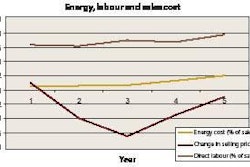When it comes to H5N1 commentary on individual countries, the United Nations Food and Agriculture Organisation (FAO) is usually guarded, preferring to encourage rather than to criticise. But recent events including surging number of human cases in Indonesia and Egypt, and first time appearance of human infection in West Africa, have clearly prompted the organisation into comment.
An FAO statement through Chief Veterinary Officer, Dr Joseph Domenech said, “Worldwide, there have been fewer cases (in poultry) of the disease this year than last year at the same time, indicating that there is a reduction in overall viral load.” But they went on to single out Indonesia, Egypt and Nigeria as heavily infected and unable to effectively contain the disease, thus making them reservoirs of virus for possible spread to other countries.
The first week of April 2007 saw Indonesia overtake Vietnam with 94 human cases (74 fatal), and Egypt (33 cases, 13 fatal) as the ‘hottest H5N1 spot’ outside of Asia. At current rates, both countries are on course to exceed their 2006 totals by May 2007.
Nigeria recorded its first human case (fatal) in January 2007 but most worrying aspect in this West African country is the complete lack of specific information from non-governmental organisations (NGOs), coupled with general reports of the disease moving around with ease.
H5N1 is endemic in Java, Sumatra, Bali and South Sulawesi and only absent in three out of Indonesia’s 33 provinces. According to the FAO, Egypt has experienced H5N1 outbreaks on four commercial farms and in 13 backyard flocks since the beginning of March, although none of these – certainly not the commercial farms – have been officially publicised or reported.
The last recorded outbreak for Egypt logged with OIE (World Organisation for Animal Health) is at Beni Suef on 17 December 2006 and for Indonesia, in Central Sulawesi on 9 August 2006. This is in direct contrast to Vietnam and Thailand, where the latest outbreaks, Mukdahan Thailand (19 March) and Cau Mau, Viet Nam (22 March) are already listed on the OIE ‘Avian Influenza Update’.
Failure to manage H5N1 is always due to a combination of factors but FAO identified a major cause for each one of the designated ‘hot spots’. For Egypt, it was put down to government failure to compensate farmers and poultry owners for losses thus allowing the disease to spread. For Nigeria, government failure was blamed for breakdowns in quarantine, allowing free movement of poultry and poultry products in and out of infected areas. For Indonesia, the overwhelming effect of size and spread of the country and its poultry flock was attributed to a weak national veterinary service
The FAO statement was not all criticism. It praised Turkey for its highly successful response to H5N1 during the period January-March 2006 and for eradicating the January/February 2007 outbreak in south-east Turkey. Viet Nam was singled out with commendation for stamping out human infection despite experiencing significant further outbreaks in poultry over the last five months.


















